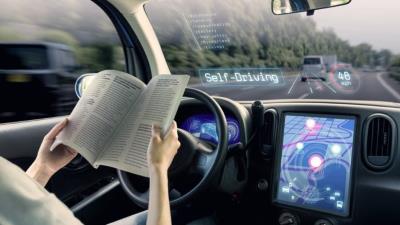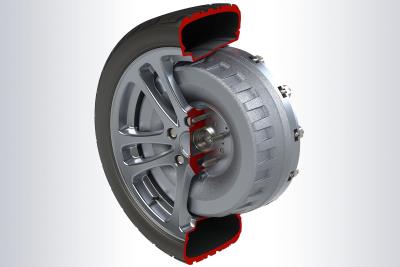Based on what various electric car makers have told us, and some rumours, we have written this guide which looks at all the exciting technology which is set to revolutionize EVs in the coming years.
Brain-to-vehicle
It sounds like something out of sci-fi, but increasing number of companies are looking at technology which can track your brain waves and learn what you are thinking:
This technology could then be used within an electric car for a range of purposes:
- As shown in that video, it could be used to help drive the car (or make adjustments to steering and speed) in lieu of the driver actively, 100% maintaining control of the car. However autonomous tech (see section below) would make this feature a little pointless by itself.
- Changing the driver’s seat position if they are uncomfortable
- Altering the cabin temperature (heat or fan speed), again if they are uncomfortable
- Suggesting conveniences such as places to eat if the driver is feeling hungry
There’s a lot of potential uses of brain-to-vehicle technology within a car, for anyone who isn’t freaked out by the concept that is!
100% fully autonomous (self driving)

As you’ve probably already seen, various car manufacturers are working on fully autonomous technology – which is a fancy way of saying self-driving cars. The idea being that you enter where you want to go, and the car drives itself there on autopilot. Tesla are one of the most advanced companies on this front (possibly with the exception of Weymo).
However whilst this technology is already doing well and there’s videos of Teslas being self-driven in busy LA traffic, development is still ongoing and drivers are ” responsible for remaining alert and active when using Autopilot, and must be prepared to take action at any time.”.
Once this technology matures further and everyone is more confident in its ability to provide 100% autonomous driving without a Human watching over it all the time, there’s some amazing potential:
- Long journeys and stressful commutes could now be relaxing, with the driver able to watch TV, surf the internet… or catch up on some much-needed sleep!
- Workers who have to go into an office daily could do part of their work on their commute. If they work 8 hours per day but have a 1 hour commute (each way), they would only need to be present in the office for 6 hours (not 8) – a reduction of 25%.
- People with severe disabilities would be freer to travel in their own car (assuming it has the required adjustments for getting into and out of it), thus having more freedom.
Solid-state batteries
Electric cars currently run on varying forms of lithium-ion batteries, which work fairly well but they have some flaws. For example, they use a liquid electrolyte for charging and discharging – but this adds to the size (and cost) of manufacturing LIB batteries, and also means that charging up is slower because actual chemical changes have to take place during recharging.
Instead, various companies are looking at creating solid-state batteries. This is where the liquid electrolyte is replaced with a ‘dry’ solid material. This has a few benefits:
- Much faster re-charge times: some estimates have talked about 1-minute charge times (up to 80%), which would be far lower than the 30-40+ minute current charge times.
- Increased range: ‘like-for-like’ solid-state batteries should be able to store up to 20% more power, leading to a possible range of 460 miles (740 km) with first-gen solid-state battery tech.
- Smaller and cheaper: due to having ‘less moving parts’ (both literally, and in terms of having lower complexity), such batteries could be made smaller and potentially manufactured cheaper.
Having said that, right now there has been no independent verification of some EV-company claims about their solid-state batteries. If the rumours are true and there could be 1-2 minute charge times with 460 mile range, however, then it would be a game changer.
In-wheel motors

When exploring how electric cars work, we shown that on current mainstream EVs, the old internal combustion engine is replaced by an electric motor. And it’s this motor which turns the drive shaft and hence the wheels.
This works well overall, however in all-electric cars there’s no physical or design reason that requires it to be done this way. Hence there’s recently been talk and demos of cars containing in-wheel motors. This is where the motor would be built into the actual wheel, and apply torque (hence movement) directly to the wheels.
In-wheel motors would help to increase accelerator responsiveness even more for EVs, but also make steering behave in a more natural way (because both left and right wheels can be independently managed by the car).
In addition, there’s currently a small time lag/delay between the driver putting their foot in the accelerator pedal, and the wheels actually moving. This would almost be eliminated with in-wheel motors, leading to a ‘quicker’ feeling drive.
Wireless charging
Just like mobile phones and electric toothbrushes can now be charged without being directly connected to something, it has been suggested that electric cars could be too.
This might take the form of a metal ‘pad’ on the floor of a parking space, which will activate when a suitable vehicle parks over it. Electricity would then be supplied via magnetic induction, into a coil inside of the vehicle.
Even better than this, though, is the idea of electrified roads. This has already been trialled in Sweden and in essence it would eliminate the need for EV charging stations if rolled out everywhere. This is because the EV’s battery would automatically charge up when driving on these magic roads!
What’s more, whilst this is naturally more expensive than having a normal road, the cost is said to be almost 50x less than installing an inner-city tram line.
To finish
That’s all the future technology that springs to our mind right now. Having automatically charging cars which automatically drive themselves wherever you want them to go, and which adjust themselves based on your thoughts, all sounds pretty awesome. Some of these measures contradict each-other a little (as in, brain-to-vehicle driving tech isn’t needed if autonomous tech is rolled out; and road chargers might not be needed if solid-state batteries are as good as people think) – but it’s defintiely an exciting time for EVs.
If you can think of any other future technology which has been mentioned by car makers or in articles, please contact us to let us know about it.